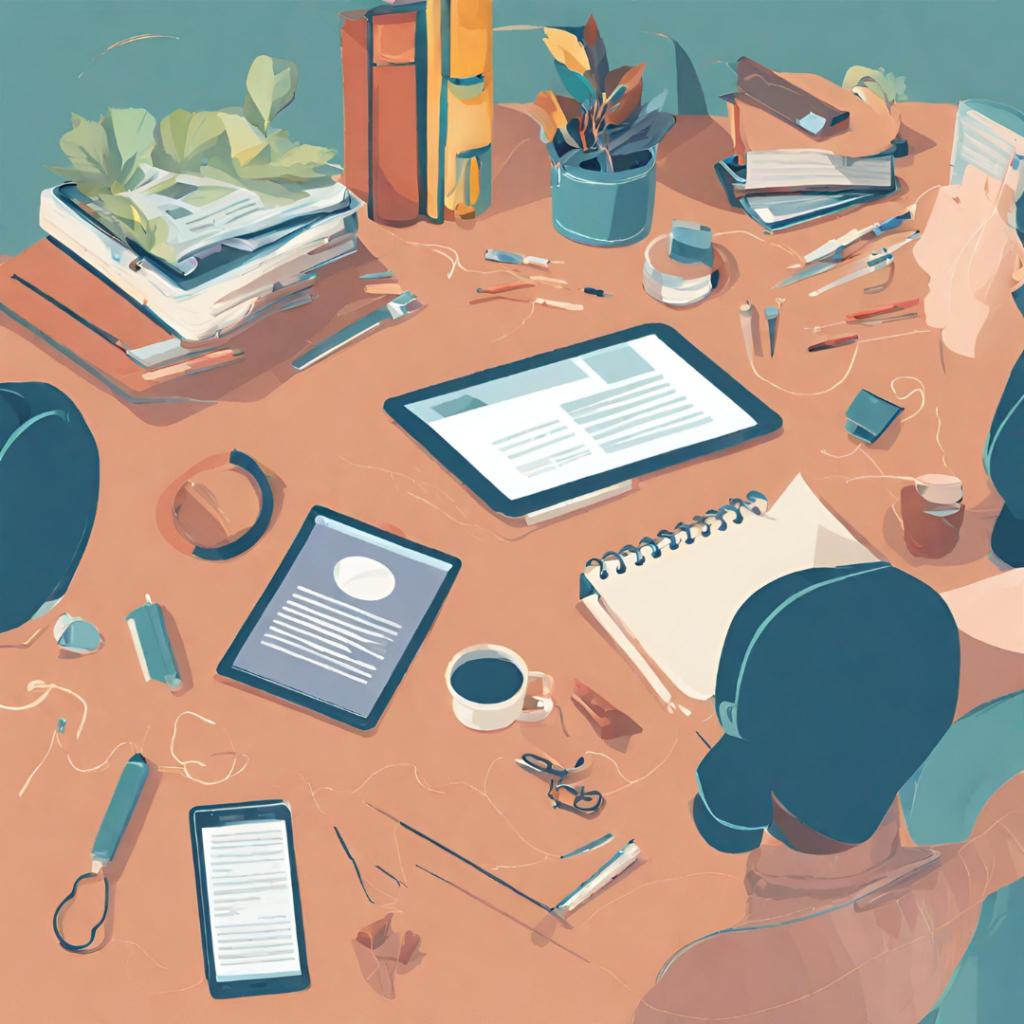
Learning is not a passive process. While the intellectual efforts involved in studying are crucial, there are external factors that can make or break your study session. Every student, consciously or subconsciously, interacts with their surroundings during study hours. By actively harnessing these interactions, you can significantly enhance engagement, focus, and retention. Let’s explore how you can leverage external stimuli to supercharge your study sessions.
1. The Auditory Experience: The Sound of Productivity
We’re surrounded by an ever-present soundscape, from the distant chatter to the hum of appliances. Recognizing and controlling your auditory environment can profoundly impact study engagement.
The Power of White Noise:
White noise, a consistent sound that masks other background noises, can drown out sporadic and potentially distracting sounds. A gentle hum, like that of a fan, can create a steady background noise conducive to concentration.
Music and Concentration:
The debate on whether music aids or hinders study has been long-standing. The answer is personal. While some may find lyrics distracting, others might find that rhythmic beats enhance focus. Experiment with genres like classical, ambient, or lo-fi to determine what works best for you.
Natural Sounds:
Sounds of nature, like flowing water or rustling leaves, can have a calming effect and increase concentration. Consider using apps that replicate these sounds to create an environment of serenity.
2. Visual Aids: Designing an Optimal Study Space
What you see, or don’t see, can have a significant impact on your study engagement. A cluttered desk or a distracting poster can pull your focus away from your books.
Decluttering the Desk:
A tidy workspace isn’t just about aesthetics. A clear desk minimizes distractions, allowing your mind to focus solely on the task at hand.
Lighting Matters:
Proper lighting not only reduces strain on your eyes but also sets the mood for your study session. Natural light can boost mood and productivity, while dim lighting might make you sleepy. Invest in good quality, adjustable lighting that you can control as per your needs.
Inspiring Visuals:
Surrounding yourself with visuals that motivate or inspire you can be a great booster. Be it quotes, infographics, or educational posters; these can serve as quick references and reminders of your academic goals.

3. Tactile Feedback: The Feel of Learning
The physical sensations you experience while studying, though often overlooked, play a significant role in how engaged you feel.
Note-taking Techniques:
The act of writing has been shown to improve memory retention. Using varied note-taking methods, like the Cornell system or mind mapping, can make the learning process more tactile and engaging.
Gadget-Free Study:
While digital devices are integral to modern learning, occasionally reverting to traditional paper and pen can provide a refreshing, tactile experience devoid of digital distractions.
Study Tools:
Using tools like flashcards, highlighters, or sticky notes can make studying more interactive. Physically interacting with your learning materials can improve engagement and understanding.
4. Olfactory Connections: Smells that Stimulate the Mind
Smell is a potent sense, closely linked to memory and emotion. Leveraging this connection can lead to improved study sessions.
Scented Study Sessions:
Certain aromas, like lavender or peppermint, have been associated with increased alertness and memory enhancement. Consider using essential oil diffusers or scented candles during study sessions.
Consistent Aromas:
Using a particular scent consistently during study sessions can create a conditioned response. Over time, just encountering the scent can place you in a study-ready mindset.

5. Spatial Arrangements: Location, Location, Location!
Where you study can be as important as how you study. The location you choose can have profound effects on concentration and engagement.
Changing Scenery:
Routine can sometimes breed complacency. Changing your study location, even if it’s moving from your room to the living area, can provide a fresh perspective and increased motivation.
Dedicated Study Zones:
Having a space dedicated solely to studying can condition your mind. Each time you enter this zone, your brain can automatically switch to ‘study mode.’
Natural Settings:
Occasionally, take your books outside. The ambiance of a garden, the gentle breeze, or even the chirping of birds can make studying a more pleasurable experience.
6. Taking Breaks: A Stimulus in Itself
While this article focuses on external stimuli to enhance study engagement, it’s essential to recognize that sometimes, the absence of stimuli, or a change in stimuli, can be just as beneficial.
Pomodoro Technique:
This time management method involves studying for 25 minutes straight and then taking a 5-minute break. These short, consistent breaks can rejuvenate the mind and maintain high levels of focus.
Physical Movement:
During breaks, engage in physical activity, be it a short walk or some light stretching. Physical movement can reset your mind, making subsequent study sessions more effective.
Conclusion
Studying isn’t just a mental task. It’s an immersive experience that encompasses all our senses. By recognizing and leveraging the external stimuli that surround us, we can create study sessions that are not just productive but also enjoyable. Remember, the key lies in experimentation. Everyone is different, and the stimuli that work for one might not work for another. Continually assess and adapt to find the perfect study environment tailored to your needs.

